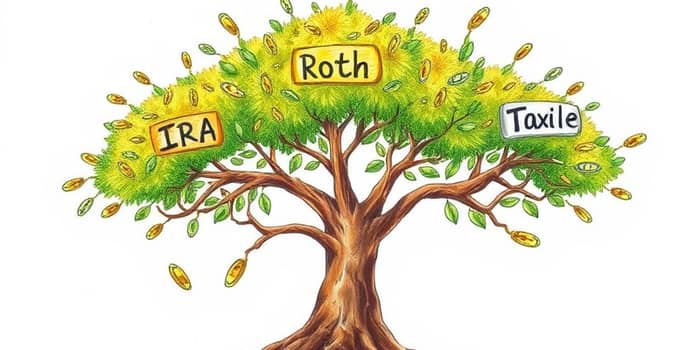
Tax efficiency lies at the heart of building sustainable wealth over decades. By minimizing tax drag on returns, investors can capture a larger share of their gains and accelerate the compounding effect. Rather than treating taxes as an afterthought, adopting a proactive tax planning approach ensures that small annual savings add up to significant benefits over time.
In 2025’s complex environment of changing contribution limits, shifting legislation, and diverse investment products, understanding the mechanics and strategies behind tax-efficient investing is more critical than ever. This guide will inspire you to take control of your portfolio’s tax profile and provide practical advice on account placement, timing, and advanced planning.
At its core, tax efficiency means maximizing after-tax wealth accumulation by structuring investments and withdrawals to legally pay the lowest tax possible. Even a 1% difference in annual after-tax returns can reduce a portfolio’s value by more than 20% over twenty years. Recognizing how different assets generate taxable events—and when those events occur—lets you craft strategies that preserve your growth.
Proactive tax planning is not reserved for high-net-worth individuals. Whether you’re saving for a first home, college, or retirement, the sooner you apply these principles, the greater the cumulative benefit to your long-term financial goals.
Each account type carries distinct tax rules. Placing the right assets in the appropriate account—known as asset location—can significantly boost your after-tax return. Below is a concise overview of account characteristics in 2025:
Implementing strategic asset location decisions means keeping income-generating or high-turnover investments in tax-deferred or tax-free accounts, while sheltering low-turnover, tax-efficient holdings in taxable accounts to benefit from lower capital gains rates.
2025 brings generous contribution limits and creative workarounds for investors at all income levels. Staying within these limits unlocks powerful advantages:
Choosing tax-managed ETFs and index funds further curtails annual distributions and capital gains, making them ideal core holdings within taxable accounts. High-income investors often allocate municipal bonds for tax-free income, benefiting from federal—and sometimes state—exemptions.
Tax-efficient investing extends beyond placement and contributions; it demands careful timing and disciplined transactions. Key techniques include:
These tactics, when applied consistently, layer additional tax savings onto your core strategy and keep you agile as market and personal circumstances evolve.
In retirement, the order in which you tap your accounts can dramatically affect longevity and tax efficiency. By sequence withdrawals to minimize taxes, you can often extend your portfolio’s life and maximize benefits to heirs. Consider strategies such as:
1. Spending from taxable accounts first to allow tax-deferred assets more time to grow.
2. Managing Required Minimum Distributions (RMDs) from Traditional IRAs/401(k)s starting at age 73.
3. Delaying Roth IRA withdrawals indefinitely to leverage tax-free growth and avoid RMDs.
For charitable-minded investors, donating appreciated securities directly to a qualified charity both eliminate capital gains taxes and generate a charitable deduction. More advanced tools—such as donor-advised funds and charitable trusts—can further magnify philanthropic impact while reducing estate taxes.
Even seasoned investors can stumble without regular maintenance. Avoid these missteps:
A financial plan is only as good as its upkeep. Schedule an ongoing annual tax strategy review to adapt to legislative updates, shifting income levels, and evolving goals. This disciplined approach ensures your portfolio remains optimized across all accounts, yielding the maximum after-tax benefit for every stage of life.
By embracing these strategies—account selection, asset location, contribution discipline, timing tactics, and charitable planning—you’ll unlock tax-deferred growth through annuities, fully leverage Roth benefits, and preserve more of your hard-earned returns. Start today and watch tax efficiency magnify your financial success for decades to come.
References













